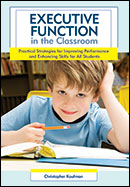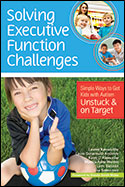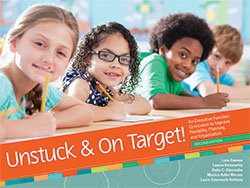As teachers and students return to school after summer break, students who struggle with executive function and other issues may need a little extra support.
Consider these 3 pieces advice from the authors of the new edition of Unstuck and On Target! An Executive Function Curriculum to Improve Flexibility, Planning, and Organization to help students who struggle with focus, flexibility, and social-emotional regulation.
Tip #1: DON’T blame or punish a student for behavior that is beyond his or her control
Students with brain-based differences, such as students with ASD or ADHD, may withdraw or throw a tantrum in response to increased demands. Regardless of how those challenges manifest themselves we have a choice in how we respond and how we interpret the cause of the behavior. We have to decide if the behavior is the result of a willful stubbornness, lack of motivation, non-compliance, or the result of a disability and a biological difference.
More simply put, is the student struggling because they can’t perform the skill or because they won’t?
Blaming or punishing a student for a behavior that is not within his or her control will not create a change in the behavior or encourage progress. Over time it will create a toxic environment that will impede other teaching and academic goals.
When, as teachers, we choose to assume a won’t, we are essentially rendering ourselves powerless. If instead of assuming willfulness, we assume there is a cognitive deficit or a lack of knowledge that is preventing the student from accessing or performing the skill, we open the door for progress and change through our teaching.
Cognitively reframing our own thinking about the cause of a student’s behavior empowers us to do something about it. We shift our thinking from being that teacher who is stuck with the behavior kid who won’t do what I need them to, to thinking about what is it my student can’t do, and how can I teach him?
The reality is, as teachers, we are already experts at this.
If you had a student in your classroom struggling to decode a reading passage, you would not stand over them demanding they just try harder. You would not take away their recess until they decoded the passage. You would thoughtfully consider where the skill breakdown was occurring, offer some explicit lessons to teach the skills, and offer reading material that matched their skill level.
Although the social and emotional challenges experienced by many of our students can be harder to pinpoint—and figuring out where the breakdown is occurring can be less obvious than in academics—supporting a student with a social-emotional disability is no different than for a student with a reading disability.
Arm yourself with information about the disability, figure out where the skill breakdown is occurring, offer explicit instruction, and meet the child where they are.

 Solving Executive Function Challenges: Simple Ways to Get Kids with Autism Unstuck and on Target
Solving Executive Function Challenges: Simple Ways to Get Kids with Autism Unstuck and on Target


